Here we go. Finally getting ready to start my next bow project.

I'm thinking through the approach at this stage and would welcome input. I'm hoping to take it hunting this fall (so I need to get crackin on the arra-makin', too). This time, I'm aiming for 45-50# @30" (state rules say you can't hunt with less than 40# @28").
I found another red oak board at HD the other day that looked like the grain was nice and straight. It's currently 72" 1x3 (.75x2.5).
I was originally going to use a plan similar to my last project:
Red oak #1. I liked the wide limbs, but as this board is denser, with fewer, wider rings (about half as many across the back) and a lot lower proportion of early wood showing, I think I can manage something a little more aggressive/efficient.
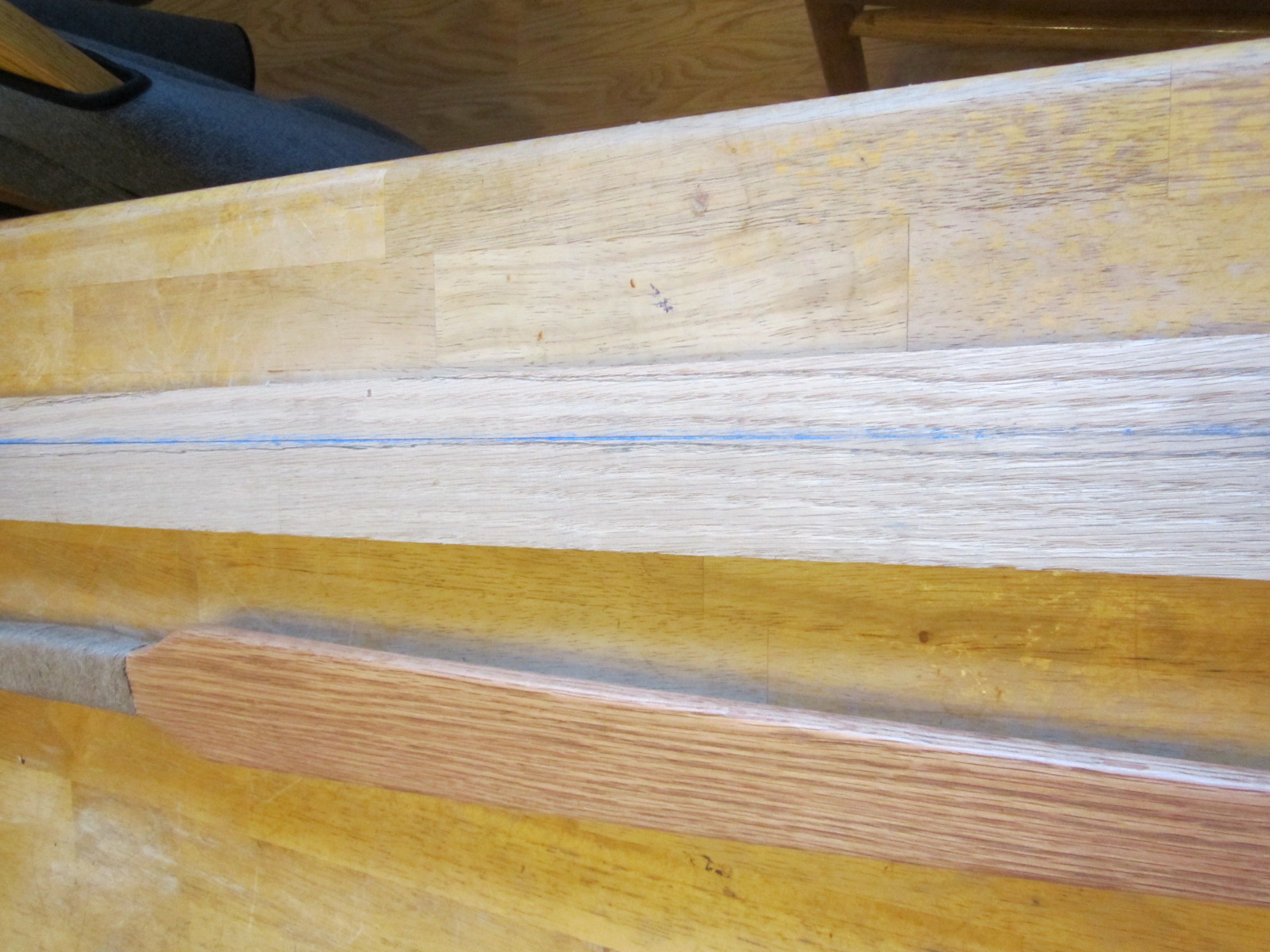
Also, it looks like this board actually
wants to have narrower limbs! Even though it's 2 1/2" wide, I'm only going to be able to get about 1 3/4" limb width, because it's got a sideways warp to it (that I didn't notice at HD). There's only 7/8" between the centerline and the edge at its worst (near the middle).
I could try to steam it straight, but in its current shape, the grain actually follows the center line much better than it would if I straightened it... so I think I'll just roll with it (if I straightened it, the board moves to the right in the middle, making that grain run more to the right before curving back to the far end).


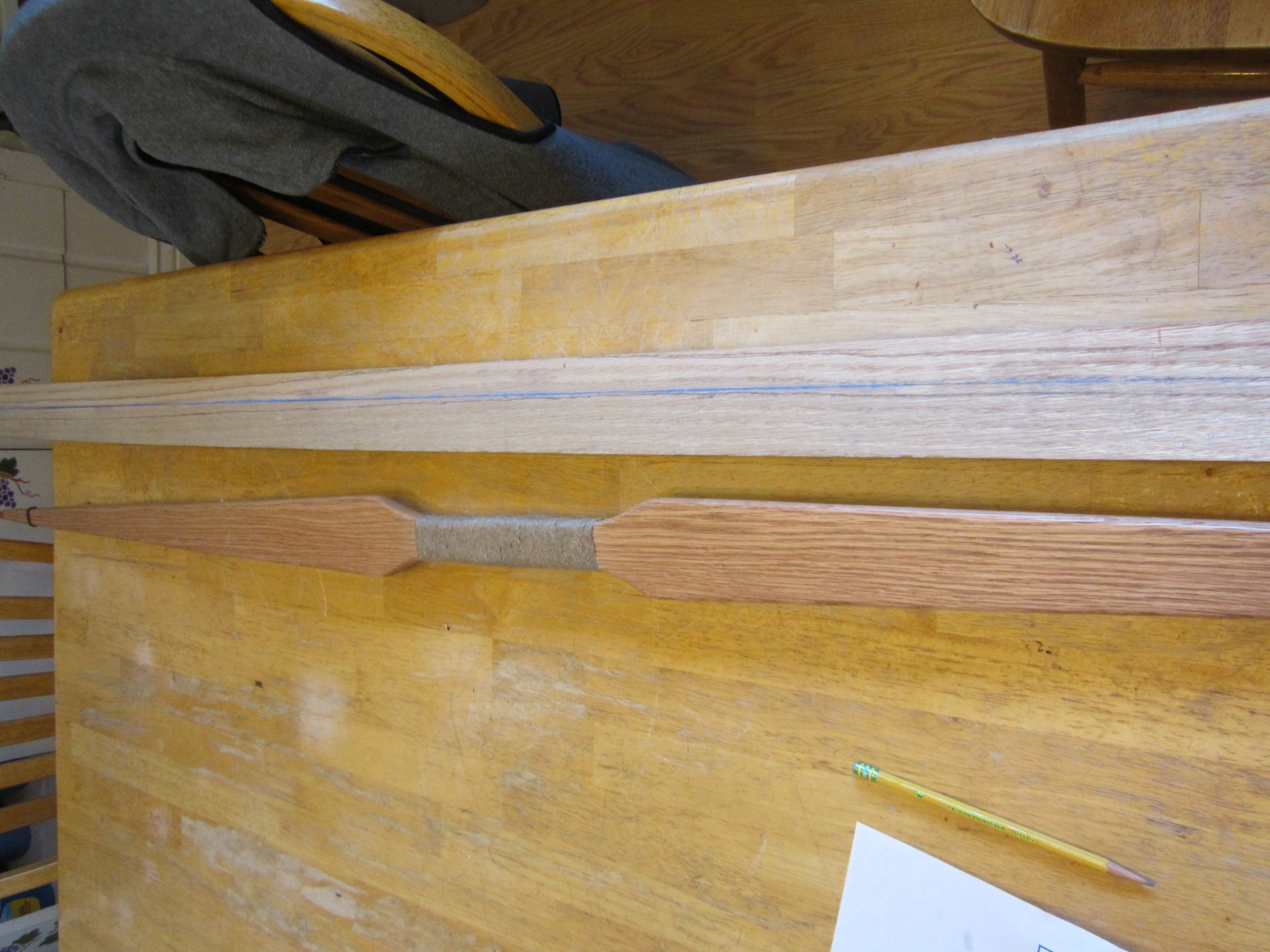
The last board was 44.4 lb/cu ft. This one is 47 (about 0.75 s.gr.). That slightly higher density and the wider rings make me less concerned with narrower limbs. 1 3/4" should be safe enough, maybe even a little less if I'm being too optimistic about the distance from the centerline to the edge.
Jim Baker's ballpark rule of thumb in TBB II "Boards from Bows" for a 'low-set, safe limb-width' on a '66" stiff-handled bow drawing 50lb at 28"[...]'
Density (lb/cu ft) = Limb width
30 = 3"
35 = 2 1/4"
43 = 1 3/4"
55 = 1 1/4"
Part 2
There's also a bit of natural curve in it, about 1/8"-1/4" between the middle and the ends (it's not perfectly even).
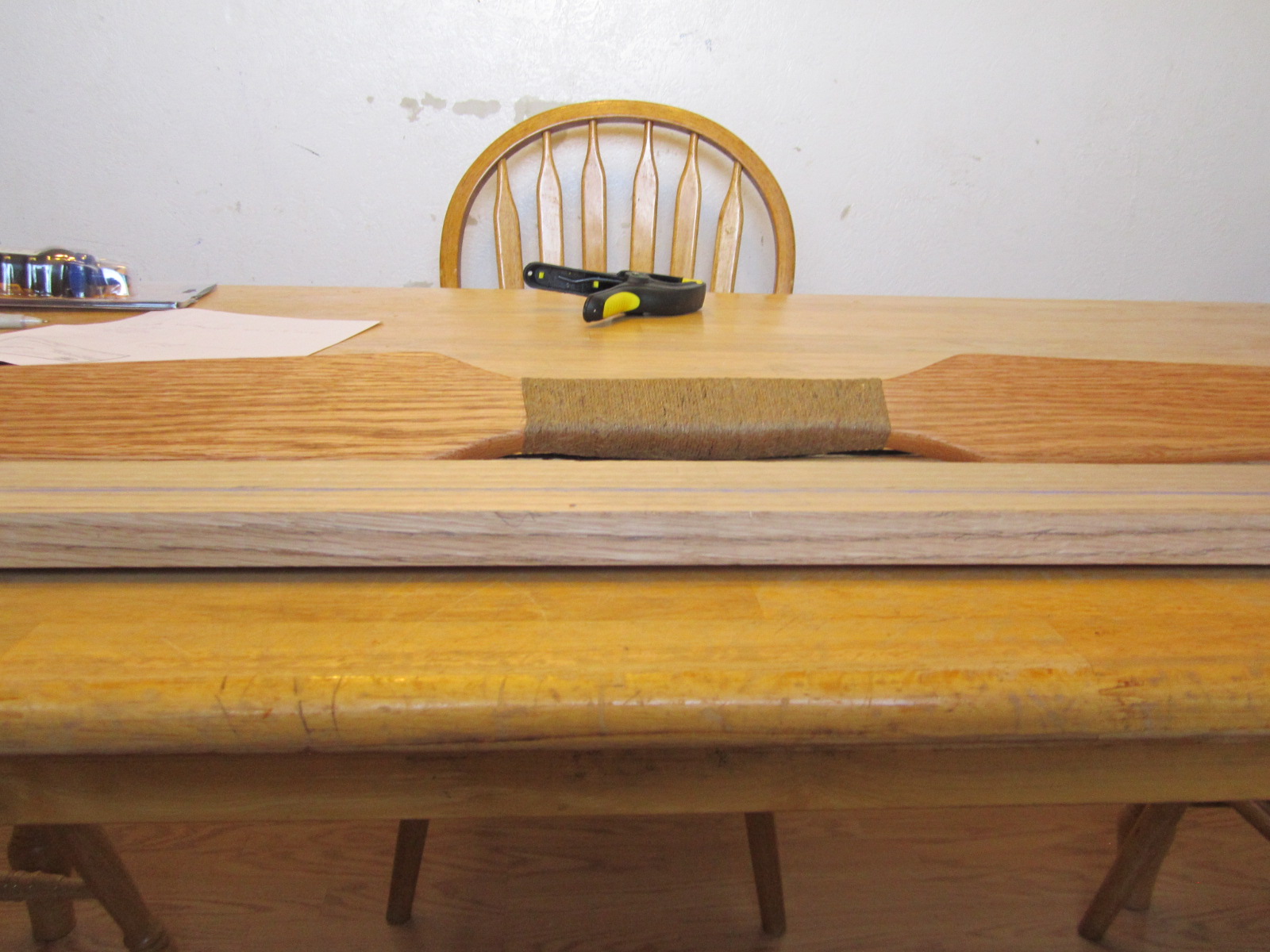
I'm debating: Based on the end-grain, using the outer face (towards the outside of the tree) as the back - which I'd normally lean toward - would also result in starting with the stave deflexed, while using the inner face as the back would give me some natural reflex.
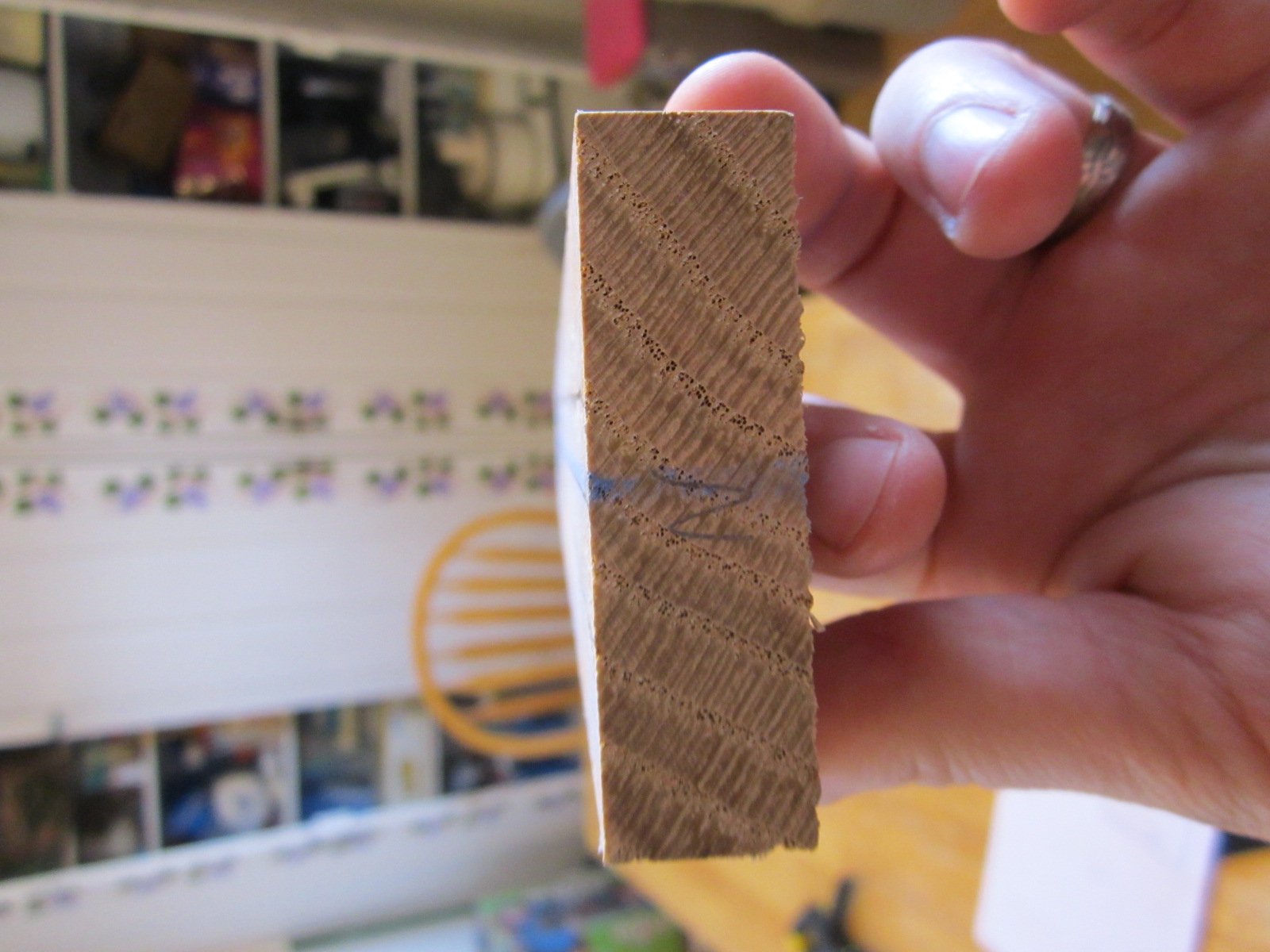
Based on the edge-grain, do you think the runoff/fiber violation would be any worse/better if I use the inner face (inner side of the tree) as the back of the bow? If there's going to be a little fiber violation in the back, is it better if it's running toward the center or away? Does it matter?
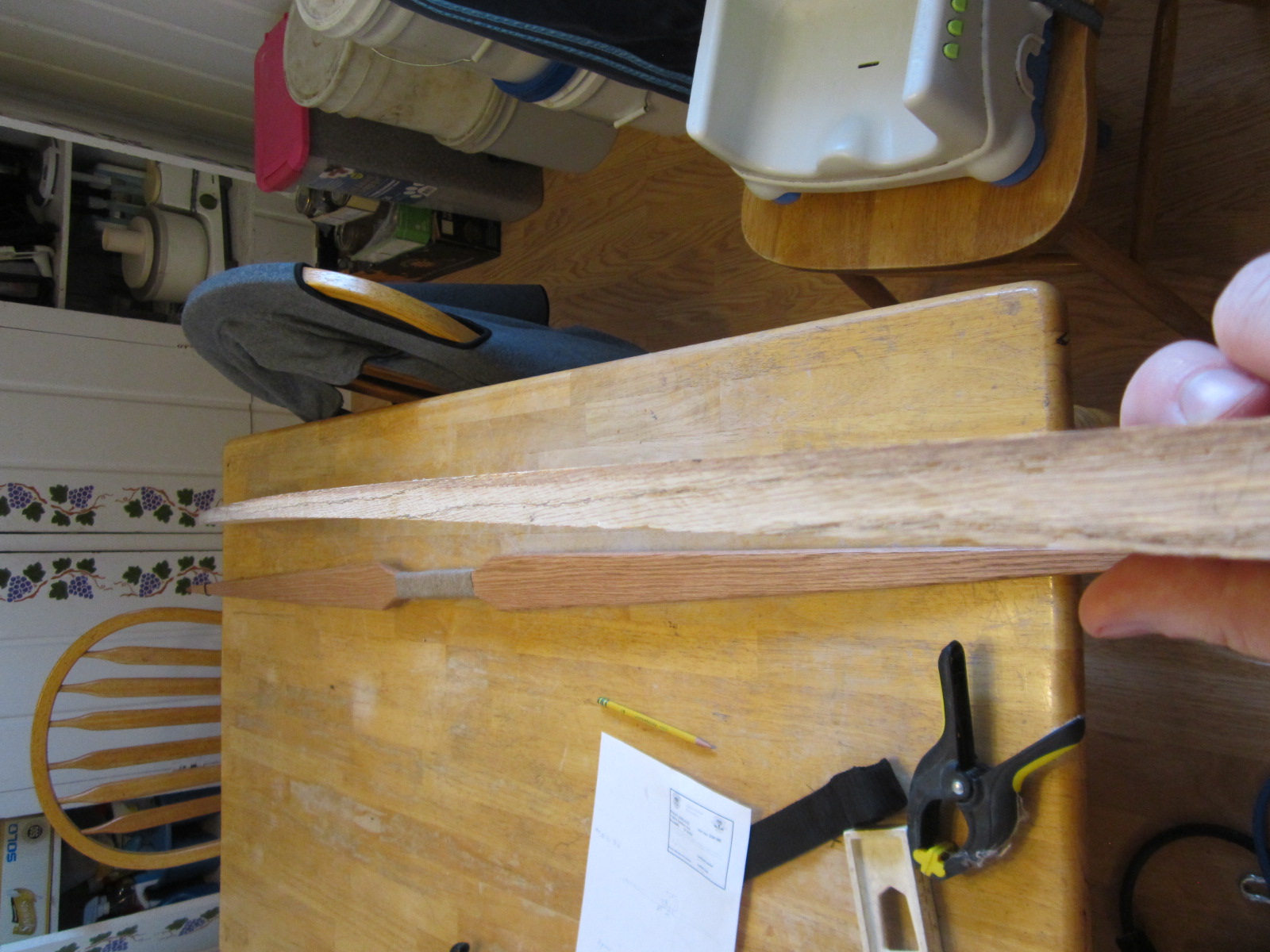
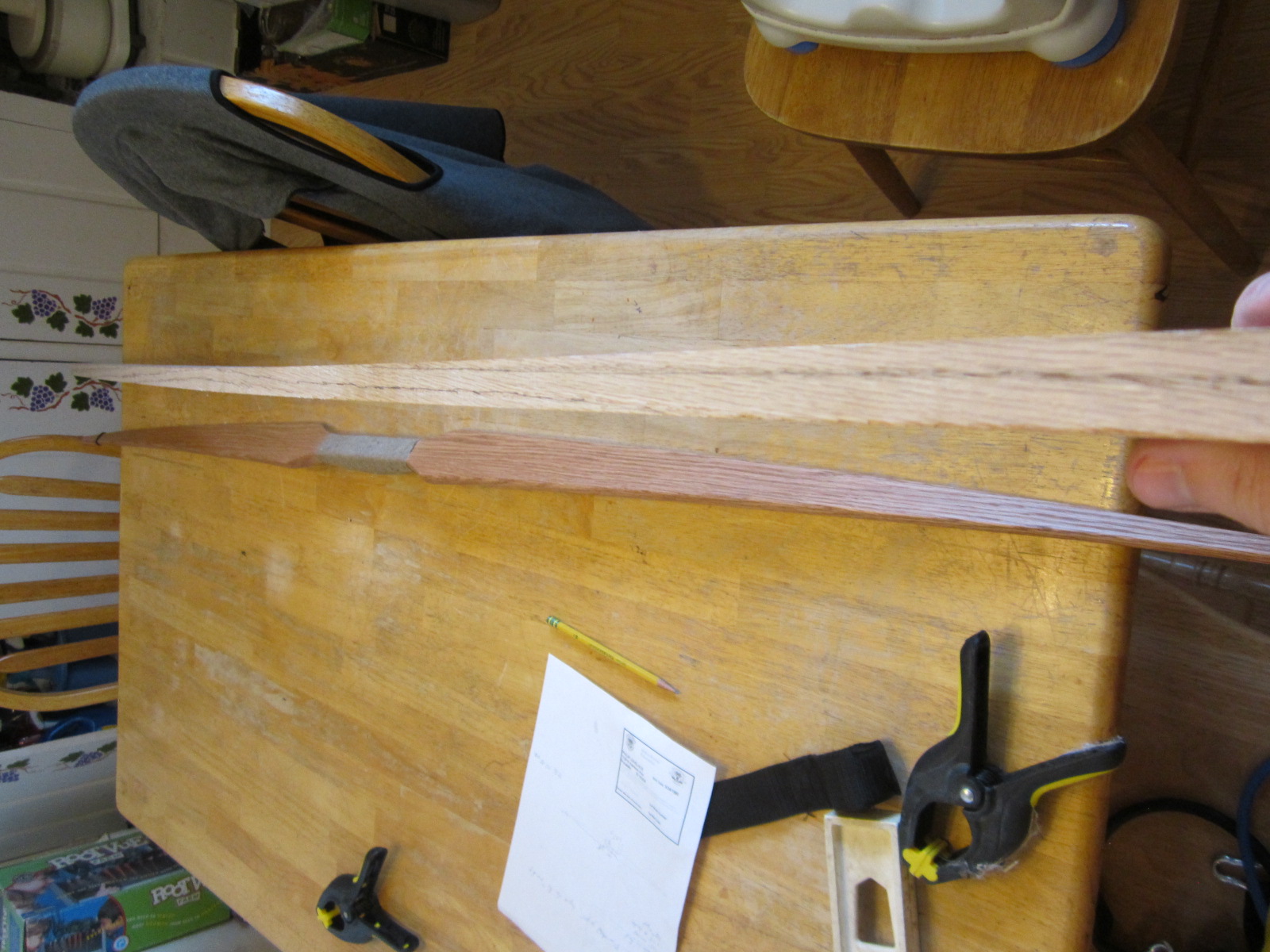
Anyway, here's the plan, with the lighter bow's dimensions for comparison:
Draw weight:Red 1: 28# @30"
Red 2: 45-50# @30"
Total LengthRed 1: 71" ntn
Red 2: 68" ntn
Max limb width Red 1: 2 1/2"
Red 2: 1 3/4"
Tip width3/8"
Handle dimensionsRed 1: 6" fade-to-fade + 2" fades at each end = 10" handle section. 1 1/4" wide in the center, 1 1/8" at the narrowest, just before the fades. 6" alder riser (total max handle thickness ~1 1/2")
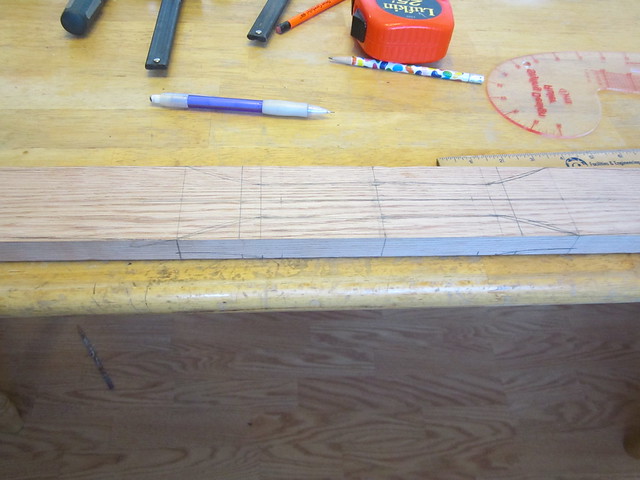
Red 2: 5 1/2" fade-to-fade + 2" fades at each end = 9 1/2" handle section. Planning on same width taper and riser thickness in the handle. No arrow shelf.